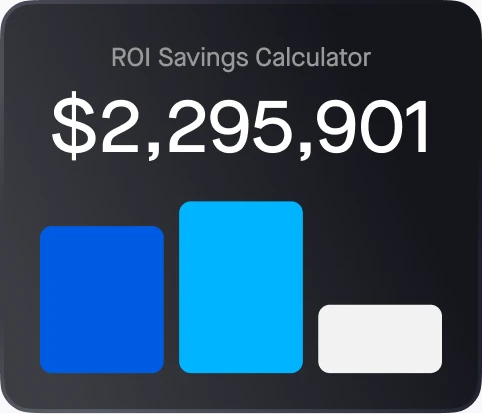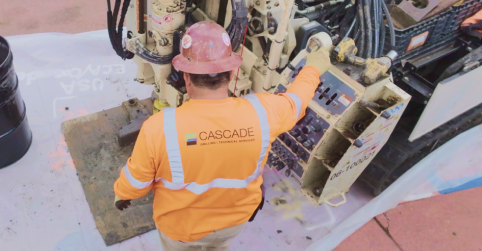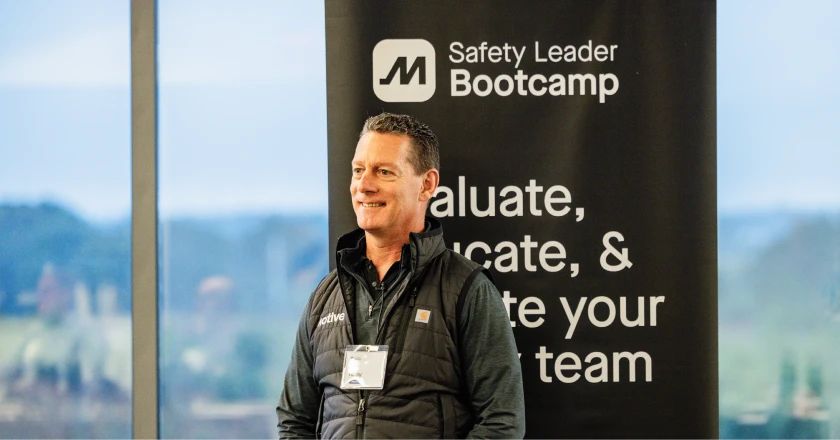Benchmarking in fleet management is among the most valuable tools for measuring fleet performance and identifying areas for improvement. The most important step? Start now. Too often, organizations put off benchmarking because they have too much to do. However, taking the time to evaluate your performance creates perspective you won’t get from internal reviews alone.
Identify gaps in your program
Improving safety and performance requires identifying areas that need attention. A data-driven approach helps uncover trends that may not be apparent at first glance. Comparing key metrics against industry benchmarks can highlight potential risks and help you learn from your peers.
- Analyze key metrics. Benchmarking helps uncover blind spots that may not be revealed internally. To identify gaps, look at key performance indicators like Total Recordable Injury Rates (TRIR). If your numbers are higher than the industry average, that’s a red flag.
The Bureau of Labor Statistics is an excellent resource for safety and operational metrics, providing comprehensive analysis on industry-specific trends. While the bureau’s data helps establish a baseline, conversations with peers provide real context behind the numbers.
- Network through industry associations. Associations offer valuable opportunities to socialize, share knowledge, and grow professionally. Many associations have committees dedicated to safety, sustainability, and operations, making them a great resource for benchmarking. Associations conduct research, publish reports, and facilitate discussions that reveal industry standards and best practices.
- Join a safety committee. Safety committees are especially useful for assessing how your performance stacks up against your peers. In leading the safety committee for the National Waste & Recycling Association, I saw firsthand how industry groups track key performance metrics and connect industry professionals.
Committees instantly connect you with people facing the same challenges. The network becomes even more valuable when serious incidents take place. We regularly discussed fatalities and how to prevent them with our peers. Some of the best practices came from reviewing what went wrong. When you self-reflect after an incident, it’s easier to see where a step might have been missed — so you can work harder to close gaps.
Expand your network any way, any how
Benchmarking isn’t just about the numbers — it’s about learning directly from others’ experiences. Connecting with industry peers provides an opportunity to exchange ideas and gain perspective. Benchmarking conversations reveal information that goes beyond data, allowing you to learn from real-world experiences. To expand your network:
- Reach out to peers directly for valuable insight. While associations are an excellent starting point, they aren’t the only way to build connection. Cold-calling companies you admire and asking to exchange ideas can be incredibly beneficial. People are often happy to oblige — and the benefits go both ways.
- Use LinkedIn to start meaningful benchmarking conversations. A simple introduction and a question about a company’s approach to a specific challenge can lead to valuable discussions.
- Share your expertise. At one point, we received frequent calls from other organizations asking about our employee engagement and recognition program. Every conversation gave us an opportunity to improve our own program.
Think outside the box
Don’t limit your research to companies like your own. Some of the most valuable lessons come from working with fleets that are structured differently.
During my years in the waste industry, we didn’t just benchmark in waste and recycling; we reached out to a respected enterprise trucking company to learn how they trained drivers. That visit opened our eyes to new ways of designing training programs and drastically improved safety performance.
| What we learned Prioritize hands-on training over classroom instruction. When we examined our driver training approach, we realized that traditional classroom-based methods weren’t as effective as hands-on training. From other industries, we learned about skills-based training models that dramatically improved performance. It led us to develop new training exercises, such as backing maneuvers in controlled environments, before sending drivers on the road. |
The results were impressive:
- Unsafe driving behaviors plummeted among new hires.
- Crashes and injuries declined.
- Onboarding improved.
- Drivers were more engaged.
- The workforce became more committed.
- Turnover rates dropped sharply.
| Other helpful advice Reach out to smaller companies, regional companies, and family-owned businesses for different perspectives. Conversations with leaders from 100-vehicle fleets can be just as impactful as those with much larger fleets. Every organization excels at something — stay open to learning from all of them. |
Gain access to top leaders
Benchmarking offers more than just data comparisons — it provides access to respected executives and new ways of thinking. Engaging with top safety professionals creates opportunities to learn from the best and apply proven strategies within your own organization.
- The more leaders you know, the more knowledge you’ll gain. Being part of the American Society of Safety Professionals created unique opportunities to engage with safety heads from Ford, Amazon, and other major organizations. Learning how these companies approached safety and employee development was invaluable.
- Developing safety professionals is just as important as finding them. A key takeaway from benchmarking with top organizations is the emphasis on professional development. Finding the right people is difficult, but once they’re in place, what’s being done to ensure their continued growth? Larger organizations like Amazon and Ford have robust development programs, and their insight helped shape how we nurtured our own safety teams.
Be ready for tough conversations
Benchmarking isn’t just about confirming what you’re doing well — it’s about pinpointing how to improve. Growth isn’t necessarily pleasant, so be ready to take some arrows.
- Even if you have a strong program, benchmarking will reveal areas that need work.
- The key is to approach the findings with the mindset that every improvement makes your business safer and more productive.
Conclusion
Better performance benefits everyone. There are no trade secrets when it comes to keeping people safe. The more we share and learn from each other, the better we all become.
By reaching out, engaging with peers, and continuously evaluating your program, you can uncover opportunities for growth and build a safer, smarter operation.
Want more great benchmarking advice?




